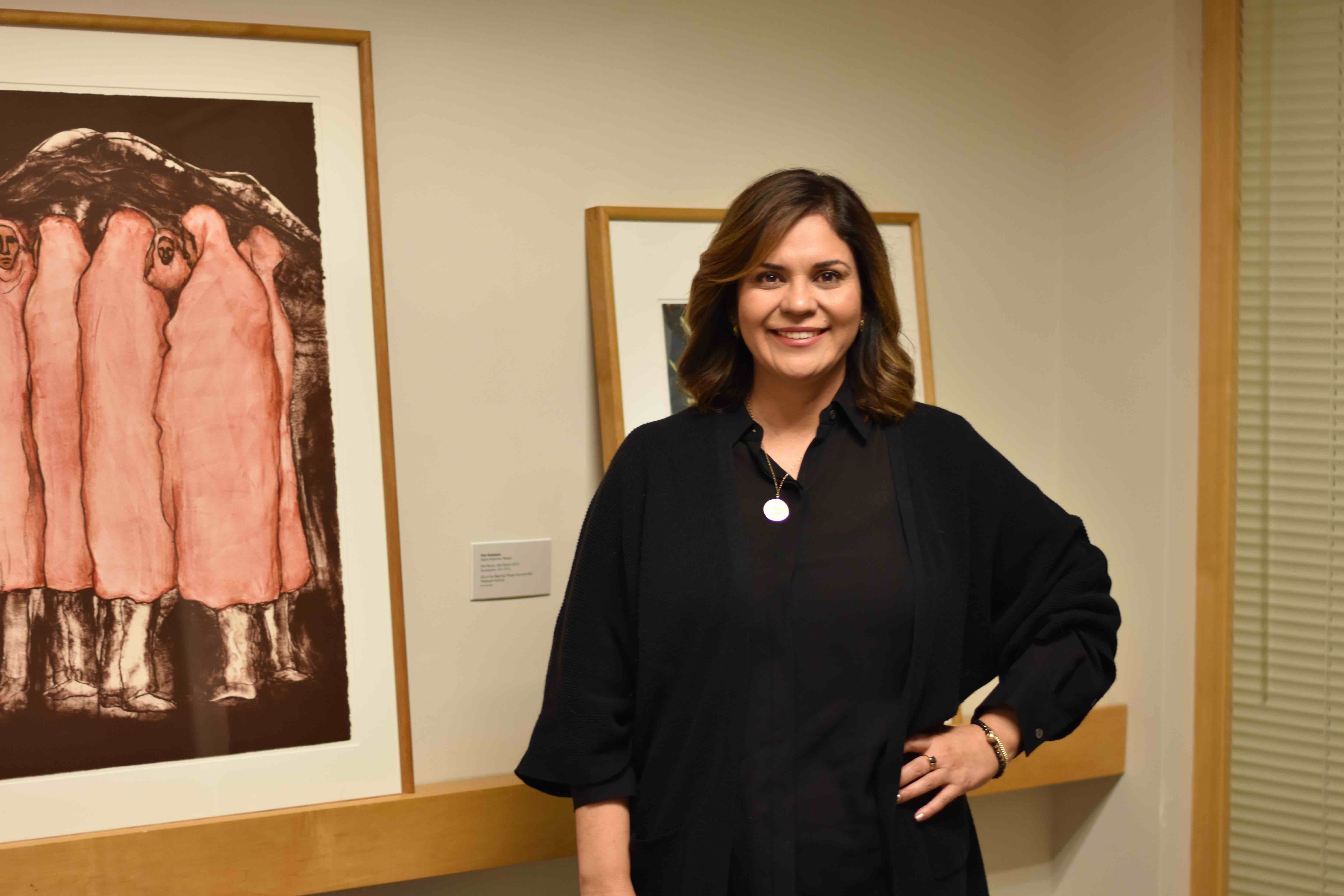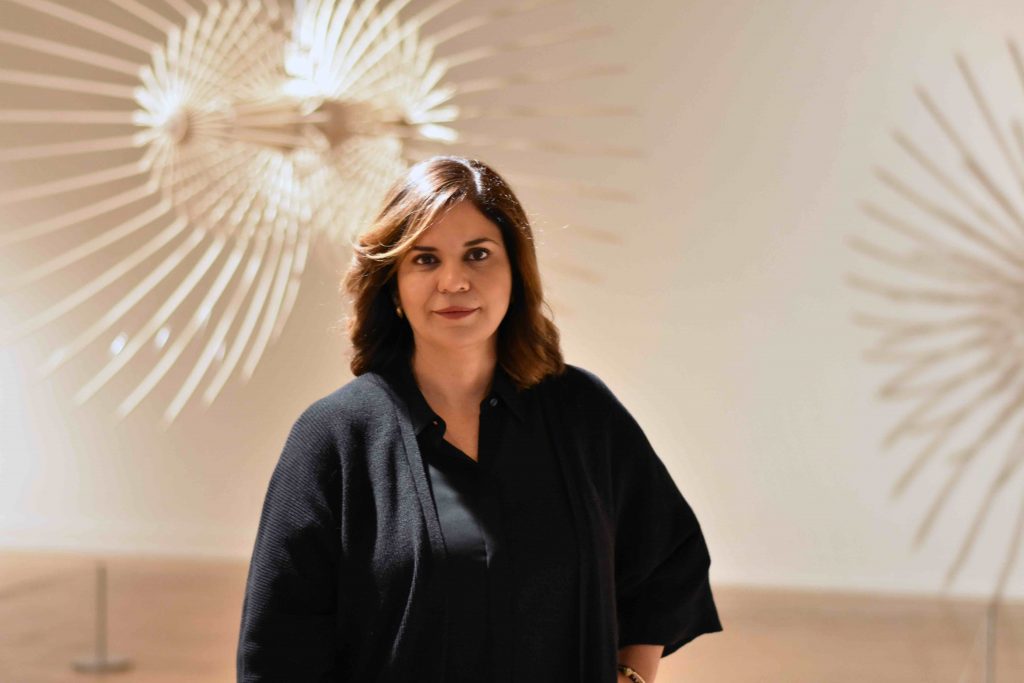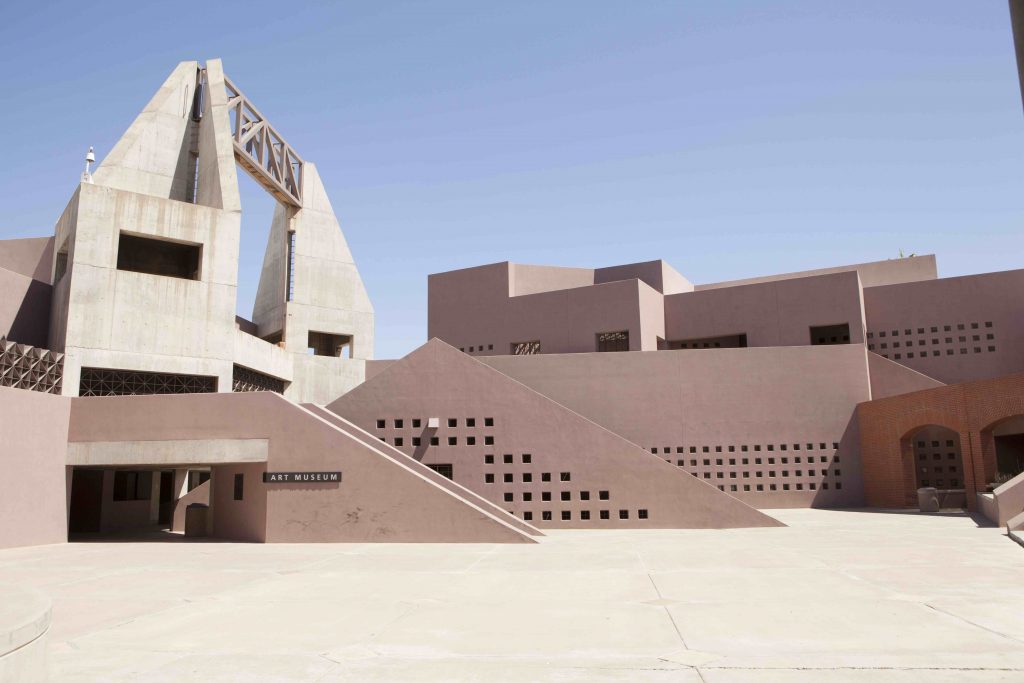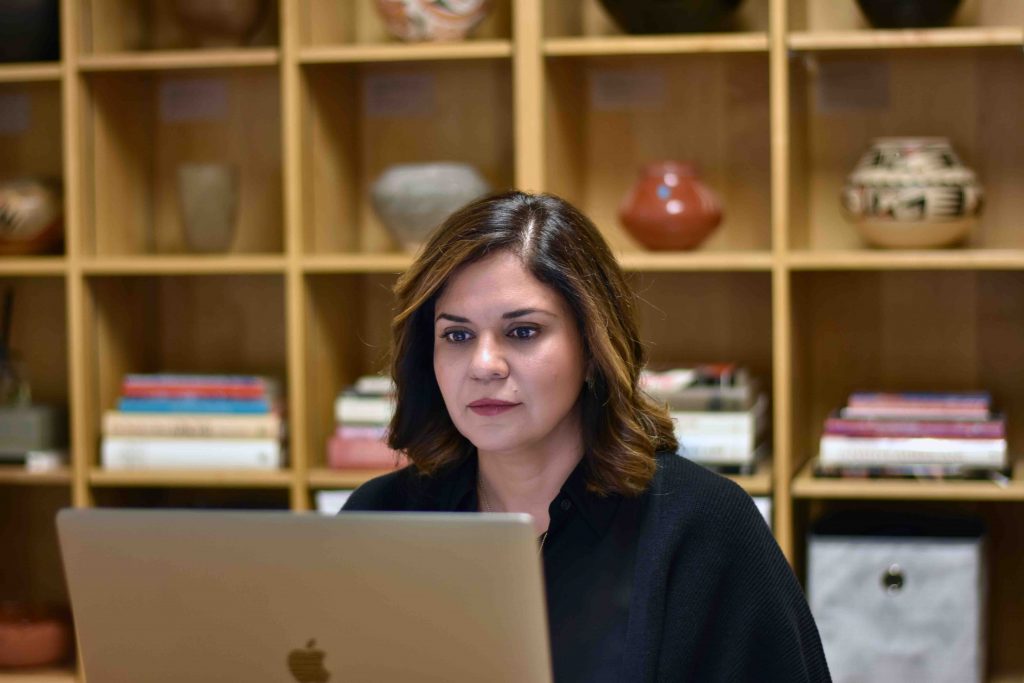Miki Garcia truly believes in the transformative power of art and has made it her mission to share this belief throughout her career. For her, the museum is the best instrument to get this message across. She couldn’t have landed in a better place to do that than at Arizona State University, one of the leading research institutions in the world. For Garcia, her role is more than a job, it’s a calling.
It’s been a year since Garcia was appointed director of the ASU Art Museum, and her impact is already being felt. She has used this time to familiarize herself with the community and to study the institution she now runs in order to advance and enrich its mission. The museum has produced events such as Party Undergroundto engage the arts community in creative ways and Get Weirdto subvert the conventions of a typical museum visit. There are plans to create more expansive shows that will run for longer blocks of time throughout the year in order to create an increasingly substantial effect.
Beyond these tangible changes, Garcia is really thinking about what an art museum’s role is in the wider context of society. “I’m interested in how institutions run,” she said. “How they make choices. How they represent the communities they serve, or don’t represent the communities they serve. How they acquire objects and why. How they reach out to audiences. How they support artists. All of that is really up for renewed exploration.”
“We were operating from a classical museum model that was very much about curators and directors as the sole arbiters of taste – lone connoisseurs who put works in a gallery,” Garcia said. “You, as audience members, came in as blank slates and were invited to learn about a show or an artist.
“There is something to be said for scholarship and expertise. I absolutely agree that the people who are experts in their fields should telling stories. But I’m more interested in a new model where we also honor the lived experiences and expertise of the communities we serve, and have their voices at the table. So the question becomes, how can we invite audiences into the museum to make their own meaning while also bringing their experiences, so we end up with a much richer community space? Those are the kinds of ideas I’m interested in right now.”
Garcia is originally from the border town of Brownsville, located at the southernmost tip of Texas. Both her parents were educators as well as artists. Her father was an art teacher and later an arts administrator. Her mother was an elementary school principal and a painter. Garcia’s upbringing exposed her to art at a very young age. “I was raised around museums and art studios,” she said. “It’s just been part of my life. As a child, I loved being inside museums. I loved the stories. We traveled to Mexico quite a lot and went to all of the museums. We went to Houston and many different places. It was while visiting those art spaces that I felt like I really belonged.”
Garcia’s appreciation for art continued as she matured. She went to school at Vassar College for art history and continued her graduate studies at the University of Texas at Austin. “I took an art history class and that was it,” she said. “I was hooked. It felt like art was the discipline of all disciplines. Through art, I could learn about history, religion, politics, philosophy, and geography. For me, it was an entryway into learning about the world. But early on, I knew I didn’t want to be in academia. For me it was about the audience experience and how museums are alive.”
Garcia gained invaluable experience at other institutions, such as the Blanton Museum of Art at the University of Texas at Austin, the San Antonio Museum of Art, and the Museum of Contemporary Art San Diego. Her most significant position prior to ASU was as executive director and chief curator at the Museum of Contemporary Art Santa Barbara. MCASB started as a small alternative space, but under Garcia’s guidance for 14 years, it became a renowned contemporary art museum.
Garcia’s newest challenge is directing an educational museum that supports one of the largest public universities in the United States. Now the fifth-largest city in the nation, Phoenix is quite different from Garcia’s hometown of Brownsville, which recently became a flashpoint in the debate over border security as the migrant caravan reached the U.S./Mexico border. However, there are parallels that speak to her personal experience.
“My mom is from South Texas. She was born in Mexico, but she’s an American citizen because her grandparents were American citizens – people just went back and forth. My father’s family has been in Kingsville, in South Texas, for about five generations. That is a narrative that doesn’t really get told. There is a sort of entrenched belief that every Mexican-American is first generation or second generation, and that is absolutely not true. In 1846, Mexico ceded much of the Southwest to the United States, and there were lots of Mexicans living in those territories. They stayed on the land and became U.S. citizens at that point. Many lost their property and had to endure horrible things, but they have been here for many generations. So, in that sense, the border crossed me, I didn’t cross the border.”
This family history has only made Garcia more driven to make museums inclusive and reflective of their communities. It informs the way she thinks about how art is presented, to whom it is accessible and how it can touch lives. “My dad was from a very rural part of South Texas, and his family had been there for generations. Back in the 1950s and ’60s, they had to enter through the back door of restaurants. They couldn’t drink at the ‘white’ water fountains, those kinds of things.”
“My father didn’t come from college-educated parents, but he became part of the Chicano civil rights movement. It was really through his discovery of art that he became connected to people, stories, and expressions from around the globe. It made him feel like he wasn’t this lone person having this one experience, that he was part of a larger space of possibility. He went on to get his master’s degree and travel the world. He became an educator. I think about how art can do that. I would not be in this privileged position today were it not for the power of art, and that is an incredible story that I will continue to tell.”
Garcia’s career in art has enabled her to live in many places with vastly differing socio-economic levels. At every stop, she has made an effort to engage with the immediate community. This experience has given her insight into the potential advantages of running an art institution in a burgeoning city such as metropolitan Phoenix.
“I’ve lived on both coasts, and I’ve lived in other places,” she said. “When I was in New York in the ’90s, I could see that the East Village and that sort of CBGB artist culture was fading away. Those kinds of underground subcultures of LA, San Francisco, and New York are really almost impossible to sustain, because the cost of living has just gotten so unaffordable for the creative class.
“Now what I’m seeing is that places like Phoenix, Detroit, New Orleans, Cleveland, and Atlanta are cities where people can afford to stay. Poets, writers, artists, and such are staying in these regional capitals and creating a local culture that’s really cool, that maybe wouldn’t exist if all these people had scattered to New York, San Francisco, or LA. They’re not doing that anymore, it’s just too expensive. I feel like I’m in Phoenix at a time when there’s this incredible culture happening all over, and that’s pretty exciting.”
“I feel like Arizona has a real sense of urgency,” Garcia said. “There’s a sense of urgency here in terms of the realities of the educational system, the changing demographics, the politics, and what it means to be a university student here. We have a lot of first generations, a lot of vets, lots of online students. The world is changing, and in Arizona you can really see it. So for me, it’s very exciting to think about where the museum fits into all of this.







